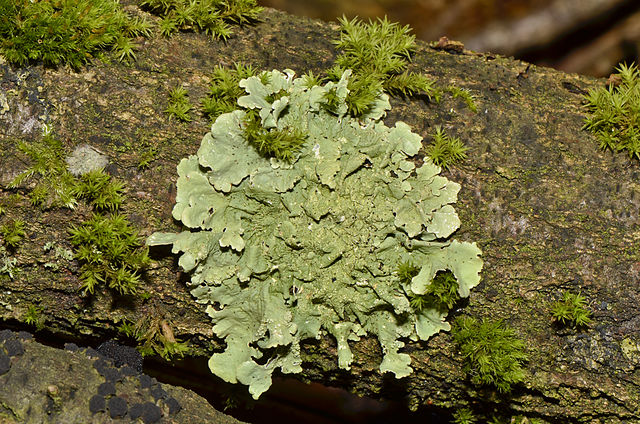The Lichen Loophole

In 1976, a book titled “Lichen as Pollution Monitors” came out. In 1979, “How to Know the Lichens” joined it on the shelves. Then there was “Biology of Lichens” (1983), “Mosses, Lichens, and Ferns of Northwest North America” (reprinted in 1988), and, for good measure, The Lichen Symbiosis” in the summer of 1993. Each of these books can likely qualify as “an obscure book on lichens” — there’s no citation being offered for that assertion, but … really, they’re books about lichens. Of particular note, though, is that if you really, really, want one of these books, you can get them via Amazon, as each of those links above proves.
Merriam-Webster defines lichen as “any of numerous complex plantlike organisms made up of an alga and a fungus growing in symbiotic association on a solid surface (as a rock).” You can see some above. Regardless, the symbiotic portion of that definition is kind of interesting, because of another symbiotic thing about lichens — or, more correctly, about books about lichens. Most likely, before the founding and subsequent popularity of Amazon, you’d not be able to find one of those books — it’s not like the local bookstore had one, and today, only about 350 libraries have a copy of “Lichen as Pollution Monitors” on their shelves. So it’s pretty safe to say that the lichen books can only exist in an environment where there’s an Amazon.com. But apparently, the opposite is also true. Amazon can only exist in a world where there are poorly circulated books on these complex, plantlike organisms.
That’s what Jeff Bezos said, at least.
Bezos is the founder and CEO of Amazon. The company got its start in 1994, just a year or so after “The Lichen Symbiosis” failed to top the New York Times‘ bestseller list. Amazon is now a multi-billion dollar operation with nearly 100,000 employees. But it started small, just like most companies. And being small, it lacked the budget to do big things right away. For example, the fledgling company didn’t start off with massive warehouses. Rather, they had to buy product from wholesalers, just like any traditional retailer at the time. And wholesalers wouldn’t sell just one or two books — as Bezos explained in a speech a few years later (and you should read the whole thing, it’s great), they had a ten-book minimum, and that was non-negotiable.
The loophole? Books about lichens, as Bezos recounted:
It turned out that you just had to place an order for 10 books; you didn’t actually have to get 10 books. We found an obscure book on lichens that none of our wholesalers actually carried. So whenever we wanted to order one book, we ordered the book we wanted, and then nine copies of this lichen book. They would deliver the one that we wanted, along with a very sincere apology about not having been able to fulfill the nine copies of the lichen book order.
But don’t worry about the wholesalers. Bezos says that Amazon’s contacts there were fully aware of the loophole, and didn’t seem to mind.
Bonus fact: There are cats hiding on (in?) Amazon, too. Go to the homepage (that’s a link to get you there, but to make it super-easy, click here) and view the source code of the page. (In most web browsers, you can do that by right-clicking on the page and selecting something like “View Source” or “View page source.”) Scroll down to the bottom, and you’ll see that there’s a “meow” hidden in there.
From the Archives: The Boat in the Middle of Nowhere: Mentions lichen!
Related: Not only can you buy books about lichens on Amazon, but you can also buy actual lichens.
